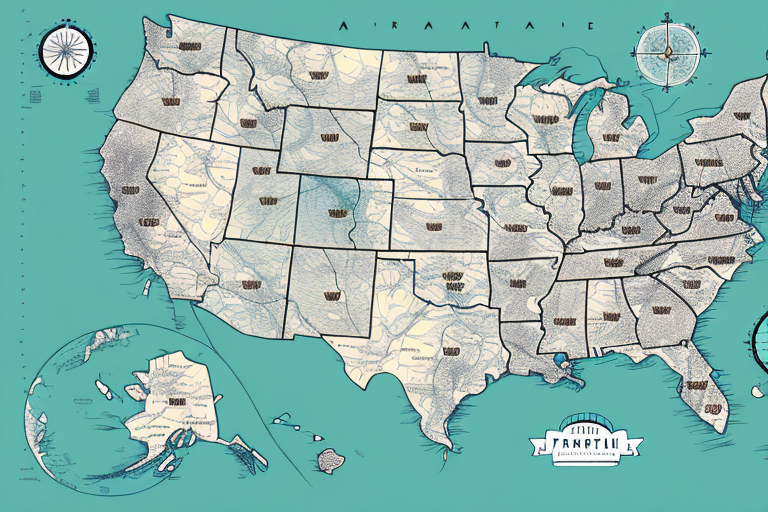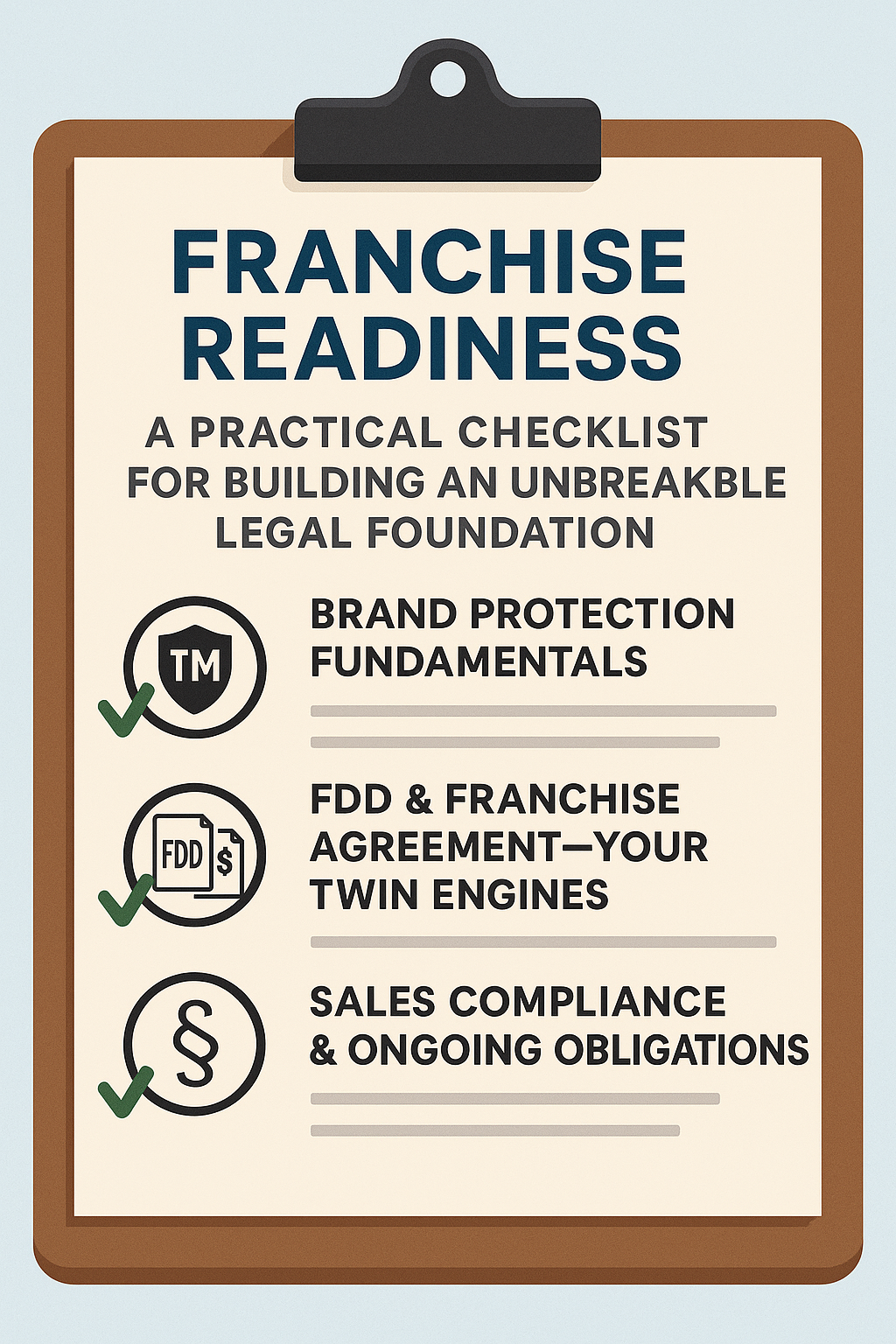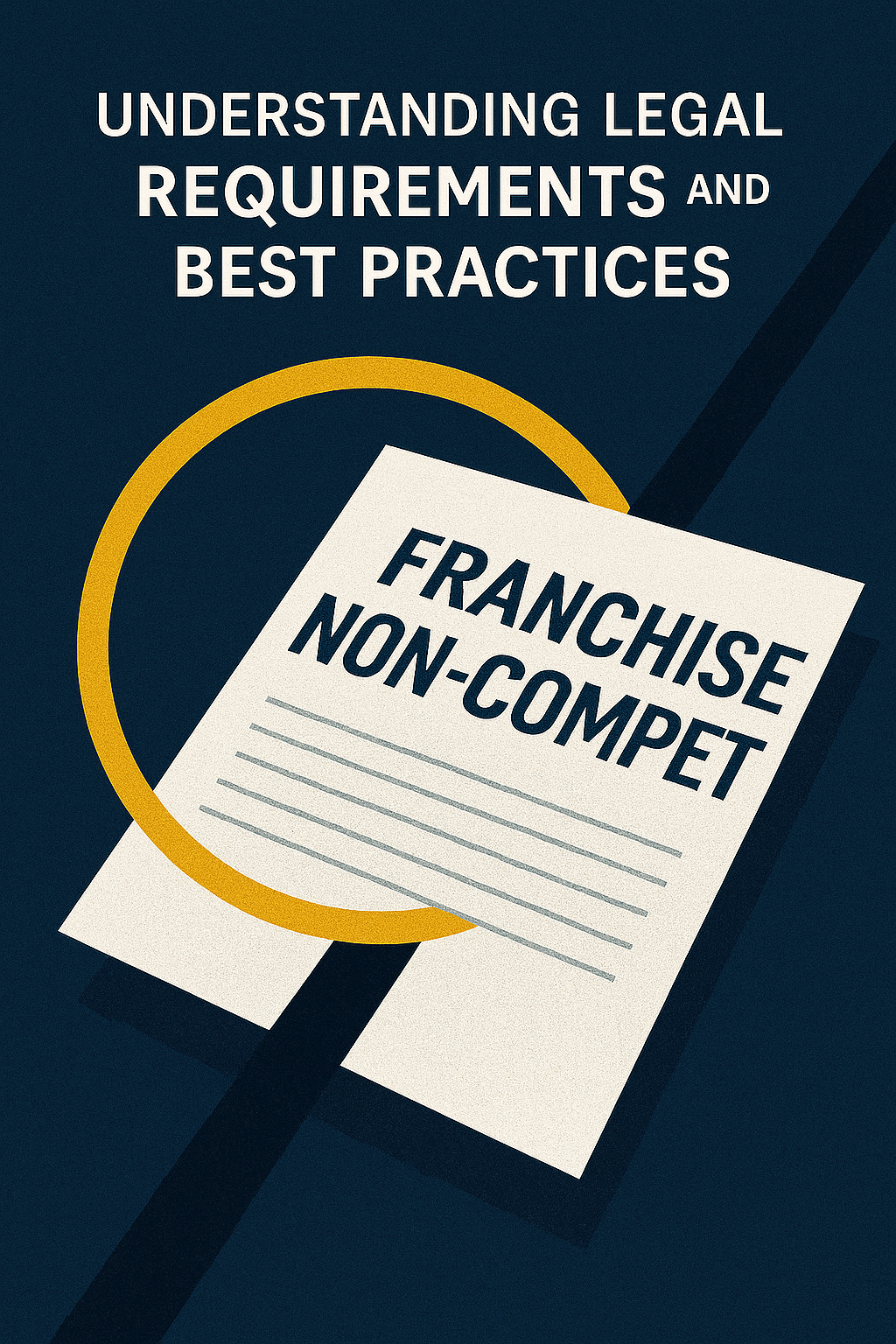Franchising has become increasingly popular in the business world, offering entrepreneurs the opportunity to expand their brand reach and generate revenue through franchised outlets. For franchisors, one crucial aspect of establishing a successful franchise system is the implementation of fair territory provisions. These provisions define the geographical areas in which franchisees can operate, ensuring that each franchisee has an exclusive or non-exclusive territory to operate within. In this comprehensive guide, we will delve into the importance of territory provisions in franchising, explore the different types of territory provisions, discuss the benefits and challenges they present, and provide best practices for franchisors when negotiating and implementing territory provisions.
Understanding the Importance of Territory Provisions in Franchising
When entering into a franchise agreement, both franchisors and franchisees must have a clear understanding of the role and significance of territory provisions. Territory provisions define the boundaries within which franchisees can establish and operate their business. They serve to protect the interests of both franchisors and franchisees by preventing competition between franchisees within the same territory, ensuring a fair and equitable distribution of customers, and allowing franchisees to establish and grow their business without unnecessary encroachment by other franchisees.
By establishing well-defined territory provisions, franchisors can create a sense of exclusivity for their franchisees, incentivizing them to invest in the brand and work towards its success. Additionally, territory provisions provide franchisors with control over the geographic expansion of their brand, allowing for strategic market growth and saturation.
Exploring the Role of Territory Provisions in Franchise Agreements
Within franchise agreements, territory provisions are typically outlined to specify the type of territory granted to franchisees. There are three common types of territory provisions: exclusive territories, non-exclusive territories, and protected areas.
An exclusive territory provides a franchisee with the sole right to operate within a defined geographic area. This means that no other franchisee from the same brand can establish a presence within that exclusive territory. Exclusive territories offer franchisees a sense of security and ensure that they have a defined customer base to serve.
Non-exclusive territories, on the other hand, allow franchisors to grant multiple franchisees the right to operate within the same geographic area. With non-exclusive territories, franchisees may face competition from other franchisees within their area. However, it also opens up opportunities for collaboration and shared resources among franchisees.
Protected areas are a hybrid approach that lies between exclusive and non-exclusive territories. In protected areas, franchisors agree not to establish additional franchise outlets within a certain distance from an existing franchisee’s location. This provides franchisees with some protection against direct competition while still allowing for the potential establishment of new outlets in the future.
Key Considerations for Franchisors When Establishing Territory Provisions
When determining the appropriate territory provisions to include in franchise agreements, franchisors must carefully consider various factors. Firstly, the size and population of the territory should align with the market potential and customer base that can sustain the franchise business. Conducting thorough market research and analysis can assist franchisors in identifying optimal territory boundaries.
Franchisors should also take into account factors such as geographic features, transportation infrastructure, and demographic profiles when defining territory boundaries. The goal is to create territories that are fair and reasonably sized, allowing franchisees to effectively reach their target market and generate profitable business.
Furthermore, it is essential for franchisors to consider competition within the territory. They need to strike a balance between providing franchisees with exclusive rights to operate without creating overly restrictive territories that limit market penetration and growth. Franchisors may need to consult industry experts or legal advisors to ensure compliance with antitrust laws and regulations.
Types of Territory Provisions: Exclusive, Non-Exclusive, and Protected Areas
To strengthen our understanding of territory provisions, let us delve into the different types in greater detail.
Exclusive Territories
Exclusive territories are the most restrictive type of territory provision, granting franchisees the sole right to operate within a specific geographic area. This means other franchisees from the same brand cannot establish outlets within the exclusive territory. Exclusive territories are often preferred by franchisees as they provide a sense of security and minimize competition.
From a franchisor’s perspective, exclusive territories can be advantageous as they promote franchisee loyalty and drive market penetration within designated areas. Franchisors can target potential customers more effectively, leveraging the unique selling points of their brand and the exclusivity granted to franchisees in those territories.
However, franchisors must carefully consider the size and potential of the exclusive territory to ensure that it is economically viable for both the franchisee and the franchisor. Franchisees in exclusive territories must be able to capture a sufficient customer base to sustain their operations and generate profitable revenue.
Non-Exclusive Territories
Non-exclusive territories grant multiple franchisees the right to operate within the same geographic area. This type of territory provision allows franchisors to expand their brand presence more rapidly, targeting multiple markets simultaneously.
Non-exclusive territories can foster collaboration among franchisees within the same area, driving shared resources and collective marketing efforts. Franchisees may be more willing to share best practices and support each other, creating a sense of community and synergy among the franchise network.
However, non-exclusive territories also bring the potential for increased competition among franchisees vying for the same customer base. Franchisors must carefully manage the allocation of non-exclusive territories to avoid oversaturation and ensure that each franchisee has a fair opportunity to thrive and grow within their designated area.
Protected Areas
Protected areas offer franchisors and franchisees a middle ground between exclusive and non-exclusive territories. In protected areas, franchisors agree not to establish additional franchise outlets within a certain radius or distance from an existing franchisee’s location. This provides franchisees with some protection against direct competition from their own brand.
Protected areas can enhance franchisee loyalty and commitment by assuring them that no additional outlets will be established in close proximity, allowing franchisees to grow their customer base without immediate threats from internal competition.
However, protected areas should not be so restrictive that they hinder the franchisor’s ability to expand and penetrate new markets. Franchisors must strike a careful balance between providing franchisees with protection and maintaining the flexibility to expand the brand in the future.
The Benefits and Challenges of Exclusive Territory Provisions for Franchisors
While exclusive territories provide franchisees with a sense of security and minimized competition, they also offer several benefits to franchisors.
Firstly, exclusive territories foster franchisee loyalty and commitment to the brand. By granting franchisees sole rights to operate within a specific geographic area, franchisors create a strong bond between franchisees and the brand, encouraging long-term partnerships and shared growth objectives. In turn, this can lead to increased brand loyalty and overall success for the franchise system.
Another significant benefit of exclusive territories for franchisors is the ability to thoroughly saturate a market with their brand presence. By ensuring that each exclusive territory has sufficient market potential and customer base, franchisors can strategically position their franchise network to capture maximum market share.
However, franchisors must be mindful of potential challenges associated with exclusive territories. Firstly, granting exclusive territories may limit the franchisor’s ability to expand rapidly, especially if there are limited market opportunities or if the franchise system is in its early stages. Careful market analysis and planning are necessary to ensure that the brand can sustain exclusive territories.
Additionally, franchisors must be vigilant in monitoring and enforcing exclusive territories. Instances of encroachment or unauthorized competition by franchisees in adjacent territories can damage brand reputation and create rifts within the franchise network. Regular communication, monitoring, and appropriate enforcement measures are essential to maintain the integrity of exclusive territories.
How Non-Exclusive Territory Provisions Can Benefit Both Franchisors and Franchisees
Non-exclusive territories offer a different set of advantages for both franchisors and franchisees. By allowing multiple franchisees to operate within the same geographic area, franchisors can rapidly expand their brand presence and target multiple markets simultaneously.
For franchisees, non-exclusive territories present opportunities for collaboration, shared resources, and collective marketing efforts. Franchisees within the same geographic area can pool their expertise, share best practices, and benefit from economies of scale that may not be available to franchisees in exclusive territories.
Non-exclusive territories also provide franchises and franchisees with the flexibility to adapt to changing market dynamics and adjust the number of outlets in a particular area based on demand. Franchisees can potentially open additional outlets within their territory to cater to growing customer needs or expand into adjacent areas to capture new target markets.
However, franchisors must be cautious when implementing non-exclusive territories to avoid oversaturation within a specific market. Oversaturation can lead to intensified competition, resulting in reduced profitability for all franchisees within the area and potential brand dilution. Franchisors should carefully assess market potential, customer demand, and the number of franchisees required to adequately serve the target market before granting non-exclusive territories.
Protecting Franchisee Interests: The Significance of Protected Areas in Territory Provisions
Protected areas, as mentioned earlier, offer a compromise between exclusive and non-exclusive territories. Franchisors agree not to establish additional franchise outlets within a certain radius or distance from an existing franchisee’s location, providing a level of protection against internal competition.
Protected areas play a vital role in maintaining franchisee confidence and ensuring fair market opportunities. By protecting franchisees from direct competition from their own brand, franchisors communicate their commitment to supporting franchisee success and growth.
Protected areas can help foster stronger relationships between franchisors and franchisees, as franchisees have a sense of security knowing that their efforts will not be undermined by additional outlets established within close proximity. This assurance can drive franchisee loyalty and motivate them to invest in the brand, leading to long-term success for both parties.
However, franchisors must strike a careful balance when defining protected areas to avoid overly restrictive provisions. While protecting franchisees is essential, franchisors must maintain the ability to expand the brand strategically and respond to changing market dynamics. Protected areas should allow for future growth and meet market demands without hindering the franchisor’s ability to adapt and evolve.
Negotiating Territory Provisions: Best Practices for Franchisors
When negotiating territory provisions in franchise agreements, franchisors must approach the process with careful consideration for both franchisor and franchisee interests. Below are some best practices to guide franchisors through the negotiation process.
1. Conduct Thorough Market Analysis:
Prior to any negotiation, franchisors should conduct thorough market research and analysis to identify optimal territory boundaries. This analysis should consider demographic data, customer potential, competition, and other relevant market factors that can help determine the right size and boundaries for each territory.
Franchisors should engage professionals with expertise in market analysis to ensure accurate data collection and interpretation. This will enable informed decision-making during negotiations and help establish fair and well-defined territory provisions.
2. Define Territory Boundaries:
Clear and well-defined territory boundaries are essential to avoid ambiguity and potential disputes. Franchisors should establish specific parameters, such as geographic features, transportation infrastructure, or clear landmarks, to define the territory boundaries in the franchise agreement.
Using maps or visual aids can be helpful during the negotiation process to provide a clear understanding of the proposed territory boundaries. This ensures that both franchisor and franchisee have a shared understanding of the territory’s scope.
3. Tailor Territory Provisions to Market Potential:
Each franchise brand operates in a unique market, and territories should be tailored to match the specific market potential of the brand. Franchisors should consider factors such as population density, customer demographics, and purchasing power when establishing territory provisions.
By aligning territory provisions with market potential, franchisors can ensure that each franchisee has the opportunity to reach a sufficient number of potential customers to sustain their operations and achieve profitability.
4. Consider Franchisee Input:
Franchisees’ input and feedback can be invaluable during territory provision negotiations. Conducting open and transparent discussions with franchisees allows franchisors to gather insights into the unique characteristics and challenges of different territories.
Franchisees can provide valuable market-specific knowledge that can inform territory provisions, ensuring that they are practical and align with the realities of the local market. Involving franchisees in the negotiation process can also foster stronger relationships and promote a sense of ownership and commitment toward the brand.
5. Be Open to Revision:
Negotiation is a dynamic process, and franchisors should be open to revisiting and revising territory provisions as needed. Sometimes, unforeseen circumstances or changes in market conditions may require adjustments to territory boundaries or provisions.
Franchisors must be adaptable and responsive to ensure fairness and long-term success for both the franchisee and the brand. Open communication and a willingness to find mutually beneficial solutions can contribute to a positive negotiation process and strengthen the franchise relationship.
Ensuring Fairness: Balancing the Rights and Responsibilities of Franchisors and Franchisees in Territory Provisions
Establishing fair territory provisions requires striking a delicate balance between the rights and responsibilities of franchisors and franchisees. Territory provisions should provide franchisees with an equitable opportunity to grow and succeed while allowing franchisors to protect their brand and expand strategically.
Franchisees have the right to operate within an exclusive or non-exclusive territory without undue competition from other franchisees within the same brand. This protects their investment and allows them to focus on establishing their customer base and growing their business.
However, franchisees also have a responsibility to adhere to the terms of their franchise agreement and operate within the boundaries of their designated territory. Respect for territory provisions helps maintain healthy competition and fosters a collaborative environment within the franchise network.
On the other hand, franchisors have the responsibility to establish territory provisions that are fair and reasonable, taking into account market potential, competition, and other relevant factors. Franchisors must also ensure that franchisees receive adequate support, training, and resources to effectively operate within their territory.






